Sara Murray tends to two dozen babies in the neonatal therapeutic unit at Cabell Huntington Hospital. They shake. They vomit. Their inconsolable, high-pitched screams pierce the air. The symptoms can last for hours, days or months.
Graceful and soft-spoken, Murray is a seasoned nurse tirelessly defending the innocent. But even she gets worn down. On difficult days, she seeks a moment of refuge behind her desk and wonders: How did we get here?
These babies – her babies – are the youngest, most vulnerable victims of a raging epidemic.
They are heroin babies, born addicted.
Her third-floor unit, a calm and quiet space with dim lighting, is meant to accommodate 12 babies, but it’s been two years since the numbers were that low. One in 10 born at the hospital endures withdrawal from some type of drug – heroin, opiates, cocaine, alcohol or a combination of many.
That’s about 15 times the national average.
The figures reflect a startling reality about this Appalachian town of 49,000 on the banks of the Ohio River: One in four residents here is hooked on heroin or some other opioid, local health officials say. That’s a staggering 12,000 people dealing with opioid addiction, in a state with the highest rate of drug overdose deaths in the nation.
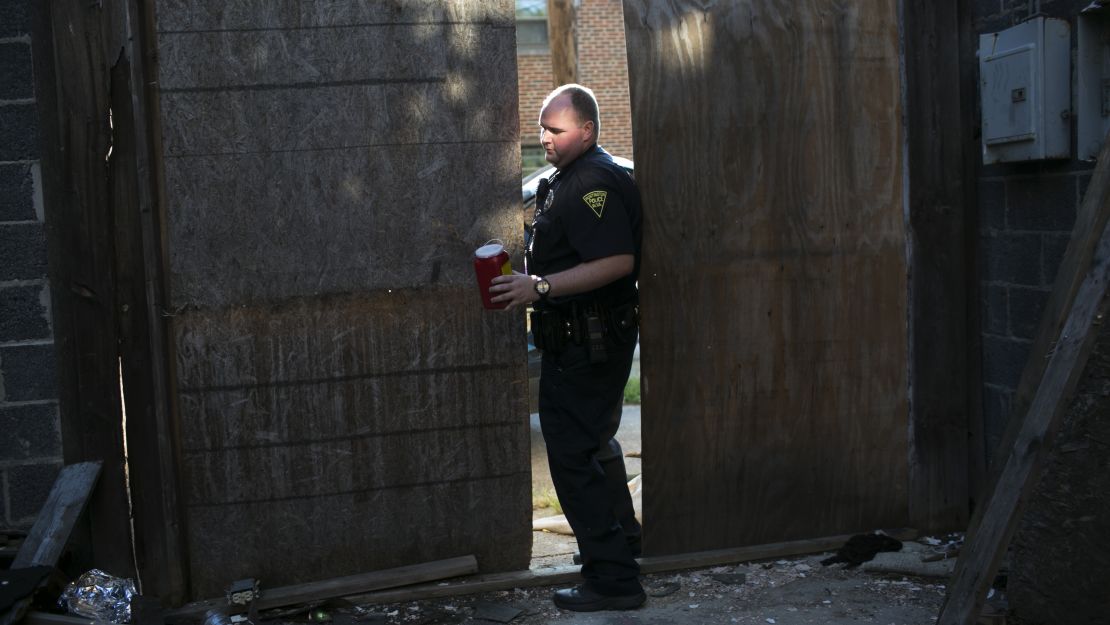
The truth is nearly everyone in Huntington is a victim of this epidemic: parents whose children lie about their habits and steal from their homes, fathers and mothers who outlive their daughters and sons.
Most devastating is the impact on the youngest generation growing up in this toxicity: children who witness their parents’ descent into a living hell, or are abandoned, or born addicted.
“It’s frustrating, it’s sad and it’s heart-wrenching,” says Murray, a nurse for the last 26 years. “My personal passion is for the baby and that they have a voice.”
On this day, August 15, Murray and her staff of eight nurses are particularly concerned about one baby boy. The mother won’t reveal the name of the dope she’s on, which makes it unnerving for the nurses trying to treat him.
Most of the infants’ parents are absent, and the possibility that they are somewhere shooting up lingers like the babies’ screams.
The first overdose
It’s about 3:30 p.m., the heat nearing triple digits, when Lt. David McClure pulls his blue-striped ambulance SUV to a crash near the West Huntington Bridge. First on the scene, the senior paramedic with Cabell County EMS finds a compact car stuck on a curb in the median.
The hum of the engine grows louder as he walks toward the vehicle. Through a rolled-down window, McClure sees a 21-year-old woman hunched toward the steering wheel. Her chin touches her chest. Drool dribbles out of her mouth. Her breaths are few and far between.
Heroin in Huntington
“Can you hear me?” he yells near her face. “Can you hear me?”
After shifting the car into park, McClure lifts her eyelids and shines a penlight into her pupils. Both are the size of pinpoints – a sure sign of an opioid overdose. When he looks down, he spots a syringe in her lap.
McClure has grown accustomed to drug overdoses – his crew responds daily to such calls. You name it, he’s seen it: Moms passed out with their kids still seat-belted. Dads sprawled on floors, their toddlers within an arm’s reach of heroin. Never once has a heroin user thanked McClure for saving his or her life. Sometimes they complain about the interruption of their high.
With minutes left to save the woman on the bridge, another paramedic sets up a bag-valve mask to squeeze air into her lungs. Together he and McClure place her on a stretcher and roll her toward an ambulance. They search her left arm for a decent vein and, after finding an unscarred one, pierce her skin with a needle containing an opioid blocker called naloxone. The drug, known for reversing overdoses, can save heroin users on the brink of death.
Within two minutes, she blinks her eyes, wincing with discomfort from the stark lights in the back of the ambulance. Outside the window, a Cabell Huntington Hospital billboard towers over the crash scene with a foreboding offer: “No appointment necessary.”
By the time she’s transported there for treatment, the next message from dispatch reverberates across town.
“They’re just showing up and dying.”
‘All hell broke loose’
Tragedy has defined this town before. In November 1970, a plane carrying members of Huntington’s beloved Marshall University football team smashed into a mountainside, killing 75 players, coaches and supporters.
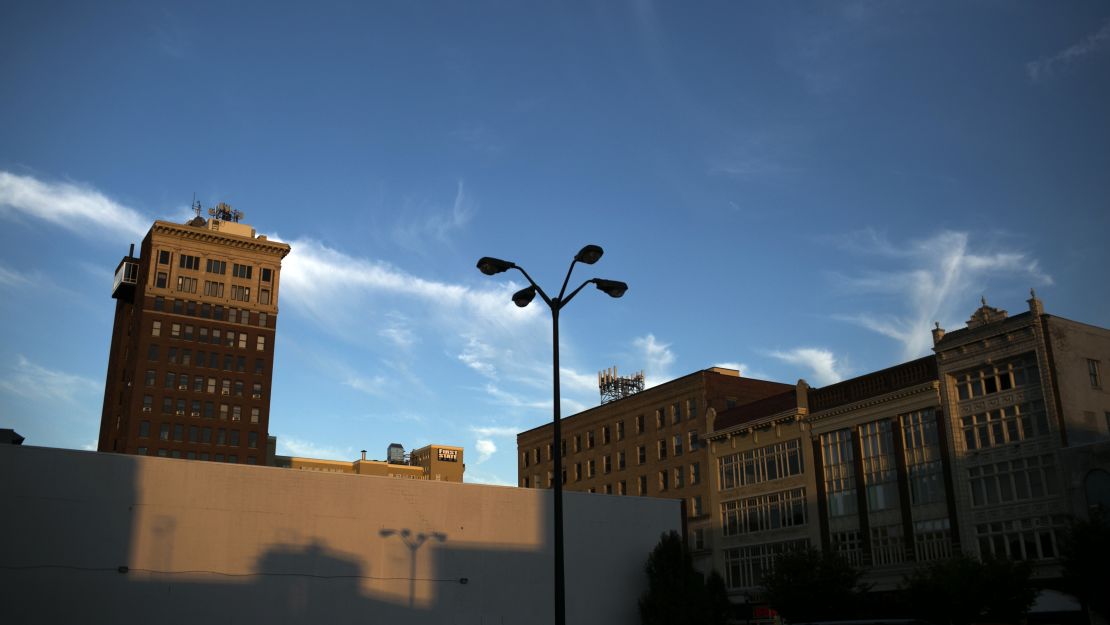
The terms “before the crash” and “after the crash” became part of the town’s legacy. The movie “We Are Marshall” captured Huntington’s spirit in the crash’s aftermath as the community came together and healed. Today Huntington must rally against a very different and relentless foe. Heroin use has grown so prevalent that a new catch phrase has emerged: “Narcanned,” the brand-name for the opioid blocker that reverses overdoses. As in, “How many times have you been narcanned?”
It’s not uncommon to hear an addict say 3, 4, 5 times.
A new number will emerge from this day: 28 overdoses in a five-hour span. The ordeal will stretch every resource in Huntington, clogging the emergency rooms in the town’s two hospitals, testing the resolve of the most hardened medics and prompting a manhunt for the peddler of a batch of heroin laced with an unknown substance.
The victims’ ages will range from 19 to 59. They’ll turn up in homes and alleys, a Marathon convenience store bathroom and a Burger King parking lot. They’ll include a father and son shooting up together. A husband and wife. A recovering addict who relapses.
It’s the moment “all hell broke loose,” Huntington Mayor Steve Williams will say later.
The moment everyone knew was coming. The moment no one knew how to stop.
Nine overdoses within minutes
Capt. Derrick Ray with Cabell County EMS gets out of his ambulance at the “showing up and dying” scene. Authorities treat it like a “mass casualty” event. Ambulances, police cars and fire trucksline Sycamore Street. Local TV crews set up too, cameras rolling. It’s shortly after 3:30 p.m.
Ray knows the neighborhood well. He’s responded to calls there many times. Residents here tend to cuss him, then ask for his help when their lives need saving.
Today is one of those days.
A police officer enters a small ranch house and injects naloxone into the thighs of two users who appear dead. Both revive. Two others are groggy, but not so far gone they need to be narcanned. Ray heads next door to a tiny low-income apartment complex.
In a shady narrow courtyard, he finds three women, ages 23, 27 and 32. Two lay unconscious in the grass. The third crawls on the ground with her arms raised like a zombie from “The Walking Dead.”
Acting fast, paramedics pump oxygen into the victims’ lungs and administer naloxone to all three.
A supervisor with two decades of experience and dough-boy looks, Ray catches a breath when his phone rings. It’s McClure, who has finished treating the woman who crashed her car on the bridge. He wants guidance: Where should he go next?

In just 20 minutes since the first call, emergency crews have treated eight overdose victims. The day is far from over.
Dispatch relays yet another emergency. McClure points his ambulance to a pink cinder-block apartment building off Jefferson Avenue.
McClure came to Huntington six years ago from an Ohio town of nearly 2,000. The pace was so slow in his home county that he handled only five medical calls a day. He admits he wasn’t prepared for this, but he’s adjusted. Still, he worries about the day someone has a heart attack and dies because the medics are all dealing with overdoses.
McClure hustles up a flight of stairs to a second-floor unit. Two women guide him to a bathroom where two men – a 47-year-old father, tall and slender, and his 26-year-old son – lie unconscious after using what a relative says was a $20 dose of heroin. The dad is in a bathtub, where the women have tried to revive him. The water is still running. Across from the toilet, McClure spots the son slumped against the wall.
McClure makes rapid-fire assessments: Are they breathing? Do they have a pulse? Can they be saved?
The women scream. McClure instructs them to leave the room. If the men are dead, he doesn’t want anyone to see what comes next.
There’s no use in yelling at the two unconscious men. He knows they won’t respond to his voice. The son is breathing, ever so slightly, at a rate of about two breaths per minute. But the dad isn’t, his face turning blue. McClure bags both men to get air to their lungs and sprays naloxone up their noses.
Because he’s alone, McClure has no time to search for veins.
Two more saves.
The mayor’s nightmare
Huntington Mayor Steve Williams snaps awake to the sound of a deluge of text messages. The 60-year-old politician returned home from vacation and hoped to squeeze in a power nap this afternoon. But a real-life nightmare disrupts his slumber.

Williams stares at his iPhone. Heroin overdoses have occurred in almost every location imaginable: dining rooms and drivers’ seats, parking lots and in the arms of paramedics. No place seems safe. Nowhere is sacred.
Has heroin laced with fentanyl, the painkiller at least 50 times more potent than morphine, arrived? What about carfentanil, the elephant tranquilizer up to 100 times more potent than fentanyl?
Over the past year, Williams has read about both spreading across the country.
While fielding the texts, he silently prays for Huntington.
The mayor knows rebirth can emerge in the wake of destruction. He moved to town two years after the 1970 plane crash and played for the Young Thundering Herd squad that rebuilt Marshall football. The teams were awful in those days, but they represented something more important than winning. They provided the community with a rallying cry in the face of despair.
But recent decades have been unkind to Huntington. Factories that made supplies for West Virginia’s coal mines shuttered. Jobs grew scarce. From 1970 to 2010, the town lost more than 25,000 residents. Block after block of once beautiful two-story craftsman homes have fallen into disrepair, the porches leaning, paint peeling from clapboard siding and “Beware of dog” signs peering from broken windows.
Drugs arrived here in the form of crack toward the end of the 1980s. Then came prescription pills. In a town with a median household income of $28,673 – where nearly one in three live in poverty – heroin has flourished over the past decade, particularly as officials cracked down on pill mills and supplies dried up. The heroin, officials say, made its way from Mexico’s coastline to the Midwestern heartland to the Appalachian Mountains.
By 2013, the year Williams became mayor, opioid abuse had spiraled so far out of control that Cabell County’s fatal heroin overdose rate rose to nearly 13 times the national average.
Officials have responded with a series of progressive policy initiatives, from a needle exchange program to help curb hepatitis outbreaks to landing a donation of 2,200 naloxone auto-injectors (worth $1.5 million) to be given away to residents. Williams also took the unprecedented step for such a small town of appointing a drug czar, responsible for getting everyone – paramedics and pastors, judges and jailers, cops and community leaders – on the same page to combat the opioid epidemic.
Unlike other drugs that came to West Virginia, Williams says, heroin doesn’t discriminate, affecting both men and women, white and black, homeless and lawyers, grandchildren as young as 12 and grandparents approaching 80. The mayor never knows who might overdose, so he carries a naloxone injector everywhere he goes.
On days like today, the priorities shift from running heroin out of town to saving lives. The mayor hopes residents can be spared the coffin.
‘God’s star in heaven’
It’s been nearly a decade since Teddy Johnson buried his 22-year-old son. News of the overdose outbreak hits hard, but he’s not surprised given heroin’s takeover.
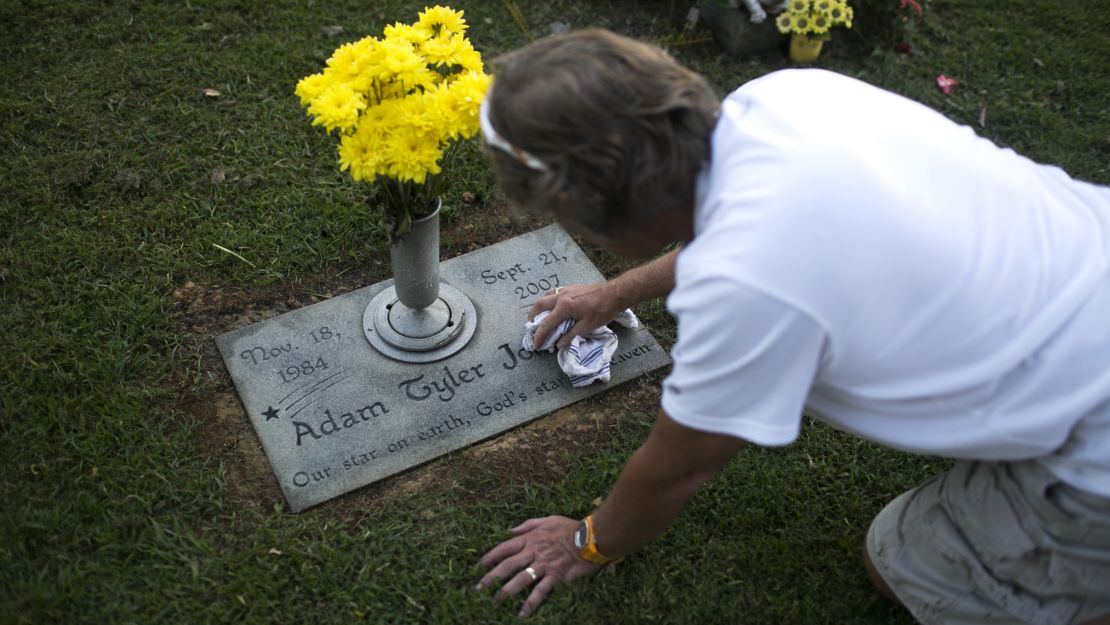
Why has the problem only worsened?
The 65-year-old father has warned of the scourge the last nine years, long before heroin reached historic levels in Huntington. He’s stared down his son’s dealer in court and an undocumented immigrant connected to a Mexican cartel responsible for distributing black-tar heroin in the region. Neither dared return his glare.
Every week Johnson visits his son’s gravestone in Spring Hill Cemetery. He trims the grass with a hedge clipper and weed whacker. He polishes the stone with a rag and granite cleaner. He outlines the engraved letters of his son’s name with a black Sharpie.
Then he steps backs and takes a look at the inscription: “Adam Tyler Johnson: Our star on earth, God’s star in heaven.”
The father runs a plumbing shop founded by his grandfather 78 years ago. He’s expanded the business to make showcase bathrooms, designer kitchens and dynamic outdoor patios. Adam, who was a history major at Marshall University, was in line to become the fourth generation to carry on the family business.
Instead, visitors to the showroom are greeted by memorials to Adam.
Police chief: Find the heroin
Shortly before 4 p.m., Capt. Rocky Johnson, commander of the Huntington Police Department’s special investigations unit, prepares to lead a drug raid at Marcum Terrace, a cluster of two-story, red-brick public housing units that dot a hill on the city’s east side. The neighborhood is home to the town’s poorest folks, a place where fistfights get posted on YouTube and scores are settled with knives. A preacher says baby’s shoes hanging from telephone wires indicate drop-off sites for drug dealers.
The complex is within a stone’s throw of where first responders earlier treated seven overdoses.
Johnson’s phone rings. It’s the chief, Joe Ciccarelli.
“Are you monitoring the radio traffic?” Ciccarelli asks. “We’re having all these overdoses.”
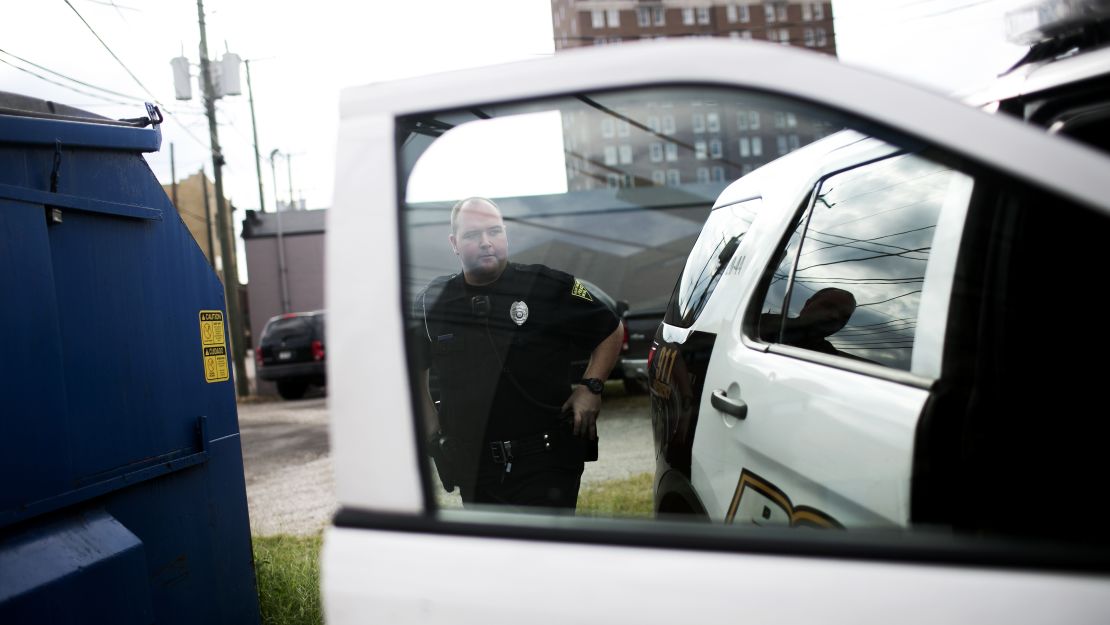
When Ciccarelli joined the force in 1978, Huntington only had about a dozen known heroin addicts. Officers chased after those few users and monitored parking lots for people smoking weed. Now, the addicts have multiplied. Though the drug has origins south of the border, the chief says the dealers here are “so far down the chain, they can’t spell Mexico.”
He orders Johnson to abandon the raid. There’s a new assignment: Find the source of today’s heroin.
Dressed in jeans and T-shirts, Johnson and his nine undercover officers break cover and shift gears. If the spread of this particular batch isn’t reined in quickly, dead bodies will be found all over Huntington.
Johnson and his officers begin conducting interviews. They’re told an out-of-towner, a man about 6 feet 4 inches and built like a middle linebacker, cruised through the neighborhood about an hour before the first overdose occurred. His nickname was Benz, though he drove a white Chevy Cruze.
Some residents say he handed out free samples; others say he sold a new product.
When he stopped and took a stroll, witnesses tell police, scores of people followed.
It was like he was the pied piper.
A mother needs her fix
Andrea has followed the lure of the high for a decade now. She shoots up twice a day regardless of costs. Addiction has robbed her of her job, friends and family.
She agrees to be interviewed and photographed on the condition that her last name be withheld. She says paramedics saved her life twice. She sought refuge in rehab once – attending a 30-day treatment center. She stayed clean for more than eight months – 264 days to be exact. She shook her habit but kept her friends, staying in a circle that led to relapse.
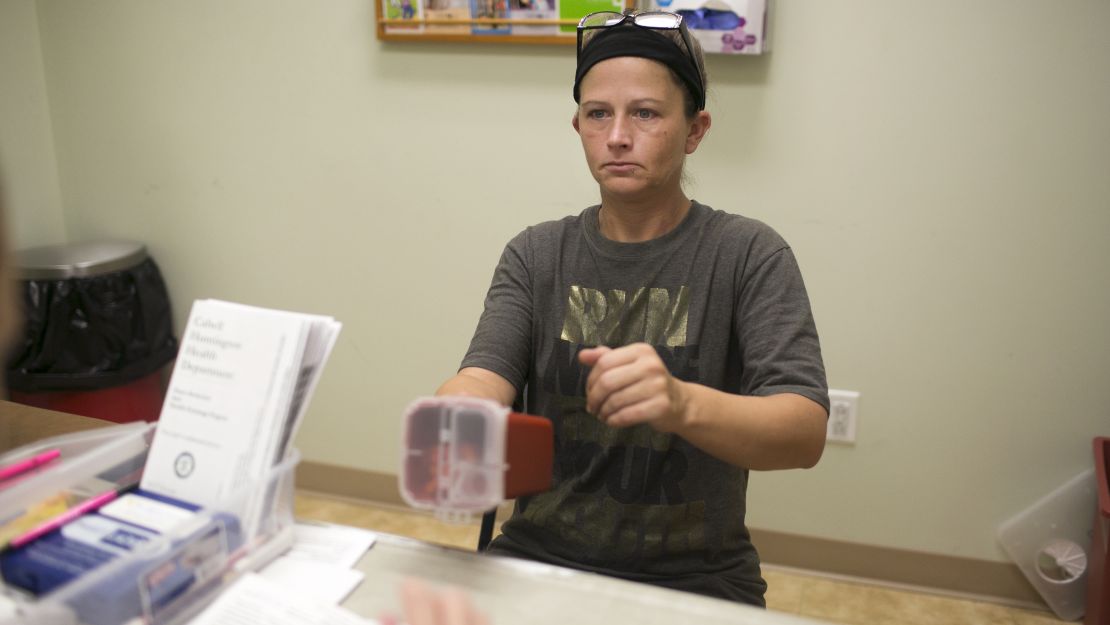
The 36-year-old former nurse says her three children – ages 18, 14 and 11 – live with her grandmother. Her own mother and father refuse to speak to her. Her oldest son, she says, hates her. Her daughter, the youngest of the bunch, found her on the bathroom floor two years ago.
The girl cries and prays for her mother.
In spite of today’s overdoses, Andrea chases her fix and chooses to shoot up anyway. Prayers be damned.
Never again
“The devil has come to Huntington,” Sara Murray says. It’s as simple and complicated as that.
Newborns in the nurse’s hospital ward weren’t just exposed to heroin; the pregnant addicts have often downed alcohol, taken prescription painkillers or dabbled with the latest fad, the anti-seizure drug Neurontin.
Most babies in the unit will likely suffer long-term neurological problems. Nearly 1 in 10 can expect to suffer from Hepatitis C in their lifetime.
When babies are born with drugs in their systems, state child protection workers are notified. Murray recalls one shattering case where doctors and nurses believed a fussy baby boy would be in danger if sent home with his parents. She says they shared notes with child protection services about the family’s behavior and pleaded on the child’s behalf.
Murray rarely knows the outcome when a child leaves her care, but this time the case made headlines in the local paper. The father was arrested, accused of killing the boy.
She and her fellow nurse, Rhonda Edmunds, made a pledge: “That will never happen on our watch again.”
They lobbied the hospital to open a neonatal therapeutic unit. As heroin use climbed, so did the number of babies suffering from withdrawal. Their fussiness disturbed the care of others in the neonatal intensive care unit. The therapeutic unit opened a year later.
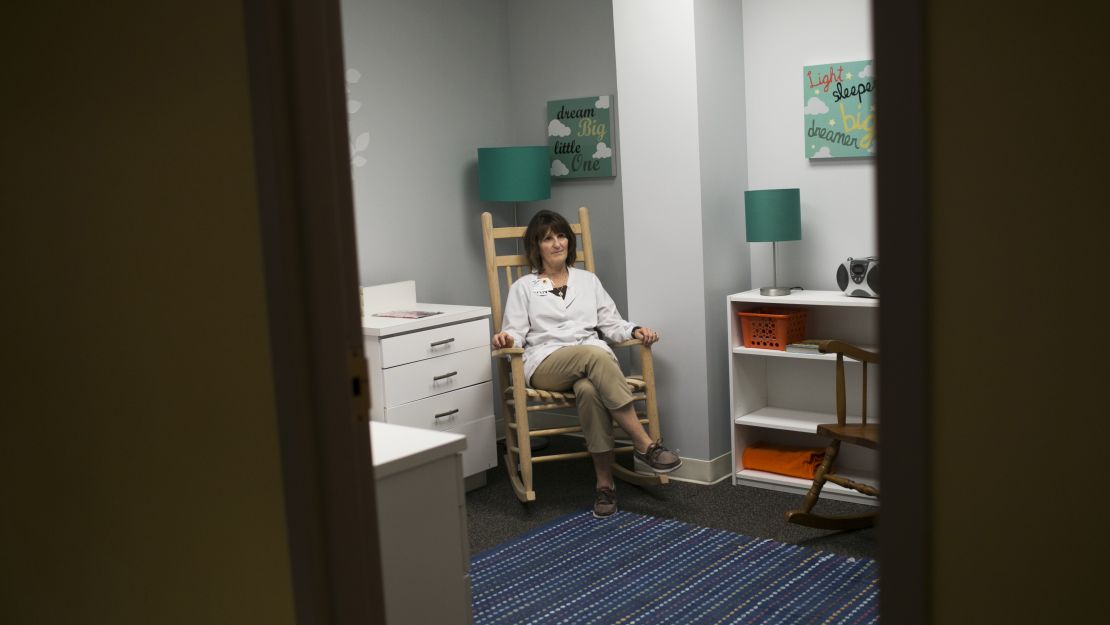
The two continued their dedication by opening a separate facility, called Lily’s Place, to provide a homier environment for babies exposed to drug use before birth. Each newborn has a separate room, and young mothers are taught skills for dealing with their babies. Most of the moms want to learn; some do not.
Nearly all the children get sent home with a parent. Most of the time it’s their birth mom or dad. Once in awhile, they go to foster care or are put up for adoption, but that’s a rarity.
One mother confided to Murray that she finally got help when her child was 4 months old and she couldn’t recall if she’d fed her baby at all one day. The mother asked a relative to care for the child while she went into treatment.
Murray worries about the addicts who don’t feed their babies and don’t call someone for help. She empathizes with their chemical dependency but says it’s difficult to hear parents prioritize their fix over their family with a simple justification: “I like being high.”
“We have generational addiction and that’s their normal. It was their mother’s normal. It was their grandmother’s normal,” Murray says. “And now, it’s their normal.”
A normalcy that is completely abnormal.
Overdoses everywhere
Lt. McClure marches up a footpath that cuts through brush behind Marcum Terrace. The next victim is splayed out beneath a hollowed out area of bushes, amid needles and a heap of sticks and water bottles piled up like a campfire.
Time for naloxone.
Less than 20 feet away, on the other side of the path, Capt. Ray comes across an overdosed man lying on a bed of brush. Another life saved.
Sweat drips from beneath the bill of Ray’s brown EMS baseball cap. The oppressive heat won’t let up. Neither will the overdoses.
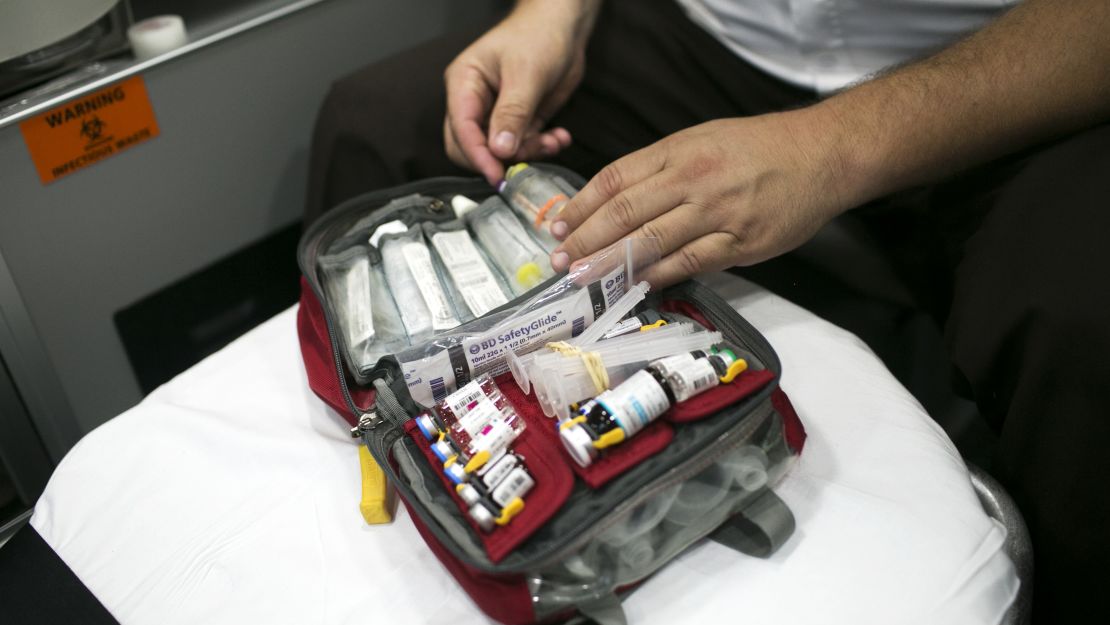
A commotion erupts outside an apartment. People scream for a medic. As Ray makes his way down the narrow sidewalk, distrustful bystanders pull out cell phones and record his every move.
He can’t let the cameras faze him. Another man is down, clutching groceries in one hand, a bag of needles in the other.
The overdose count nears 20.
‘They can’t unring the bell’
It’s nearly 5 p.m., closing time at the Cabell County Courthouse, as Family Court Judge Patricia A. Keller wraps up another day of child support cases. Within the hour, the 58-year-old West Virginia native is home and flipping on the news in her living room. She stands there in shock, unable to focus on preparing dinner.
How many overdose victims are parents, she wonders. Will those families fracture?
Keller never thought drugs would consume her court. Fifteen years ago, she was mostly setting visitation schedules for alcoholic dads. Now at least a third of the cases she sees involve protecting children from the havoc wreaked by opioid addiction.
Every week Keller decides whether moms and dads who have lost custody, like the ones at Lily’s Place, can see their children again. Whenever possible, she prefers to create avenues for heroin users, including mothers like Andrea, to regain visitation rights. First, they must typically meet with a counselor and submit to random drug tests.
Far too often, addicts aren’t willing participants. In some cases, parents show up high to her chambers, if they show up at all. Sadly, some parents lose their children for good.
“When people have been in the madness of their addiction, being a good parent is the last thing on their minds,” Keller says. “When they start to become clean, they can’t unring the bell.”
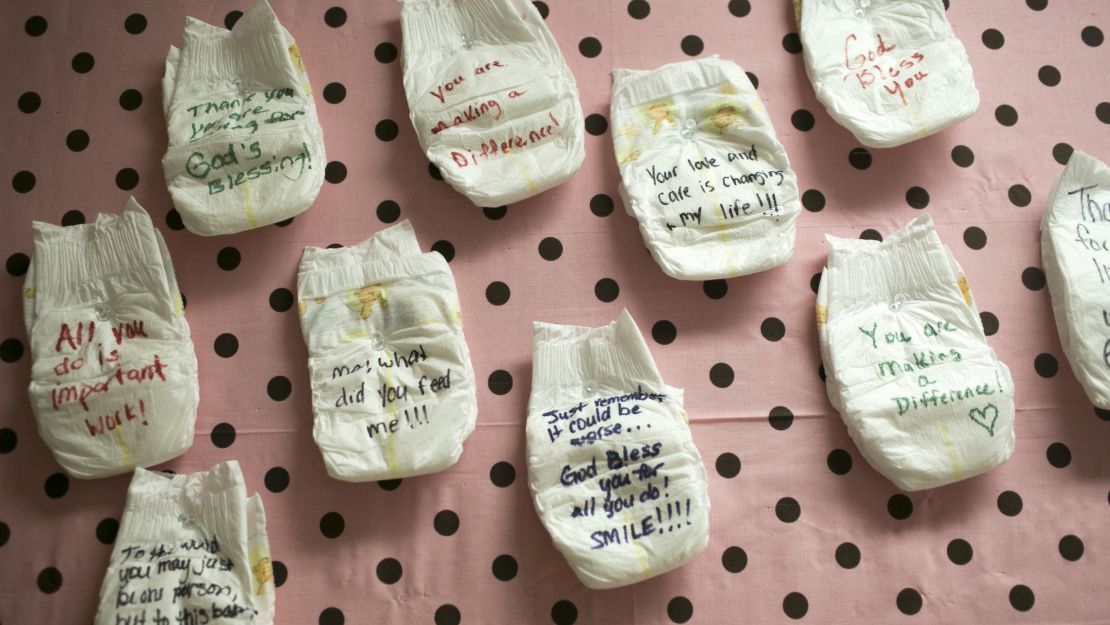
Likewise, Keller never thought her job would also mean being a counselor. But she can’t ignore the fact that about three of every four parents in her court are so poor they can’t afford a lawyer. She’s encouraged dads struggling with heroin addiction to get clean needles at the exchange. Other times, she’s offered moms literature about recovery programs.
Keller also presides over a local drug court that’s one of West Virginia’s largest. Founded in 2008, it gives nonviolent criminals with a high risk of reoffending or relapsing a chance at treatment instead of incarceration. Half of the participants drop out, leading them back to prison. For the other half who graduate, 9 out of 10 don’t commit another crime, Keller says.
But the drug court has limitations: Addicts can only get help once they’re in the criminal justice system, a point where families have already suffered the consequences. For those who want assistance before that point, it can be hard to find.
“A lot of people want to get help,” Keller says. “But we don’t have enough treatment beds. It’s so frustrating. You’ve got to get it for them as soon as they’re ready.”
Resurrected in recovery
While the 6 o’clock news airs, Will Lockwood sits in a crowd of about 70 at the Expression Church of Huntington, a refuge for recovering addicts sandwiched between Cabell Huntington Hospital’s emergency room and Spring Hill Cemetery.
Faces of recovery
Tim Hazelett, an administrator with the county’s health department, takes the stage and acknowledges the string of overdoses that have occurred this afternoon. Then he uses the pulpit as a teachable moment.
The people who are overdosing, he says, are in need of help. Put out the word, he tells the crowd. There’s a batch of heroin laced with something that can kill you – so stay away from it.
He dives into a PowerPoint presentation, 37 slides in total, that describe how to recognize the signs and symptoms of an overdose, how to administer an intranasal form of naloxone and what to do if a child overdoses.
Lockwood, who helped organize this session, relates to every word. The 25-year-old overdosed four times in a three-year period. He’s stayed clean for nearly two.
Two summers ago, he embarked on a mission to end his life by means of a lethal fix.

He holed up in room No. 216 of the Coach’s Inn,a dingy pink motel where passersby can see walking skeletons stumble from room to room. Lockwood overdosed for what he hoped would be the last time. When he awoke, his drug dealer pounded his chest in a bathtub, cold water running down his face.
He stood and, as he came to his senses, glimpsed at his reflection in the mirror. His body-builder frame had withered by more than 60 pounds.
“You are worth more than this,” he told himself. “You have a son. You have a family. You know exactly what you need to do.”
Now Lockwood works as a peer coach for The Lifehouse, a faith-based recovery center that helped him get sober. As part of his job, he mentors men who are desperately trying to quit.
“I empathize with the people of this community,” he says. “A lot of them don’t want to be in this situation. Truly, what it boils down to is fear.”
Fear of rejection. Fear of judgment.
Tonight, everyone learns the value of life-saving intervention. When the naloxone course ends, worship begins. Lockwood and the rest of the congregation proclaim their commitment to God, to one another and to themselves. Many of his fellow worshippers have skirted death – in biblical terms, resurrected.
The fallout
Just blocks away, as the church service continues, a man stiffens in the bathroom at the Marathon convenience store. His legs, contorted, stick up straight in the air. His pupils are dilated.
A woman lies sprawled on the floor, beneath the sink.
This is one of Lt. McClure’s final stops – almost exactly 12 hours into a shift that began at 7 a.m. His clothes are drenched in sweat and the stench of a hard day’s work.
Two more get narcanned.
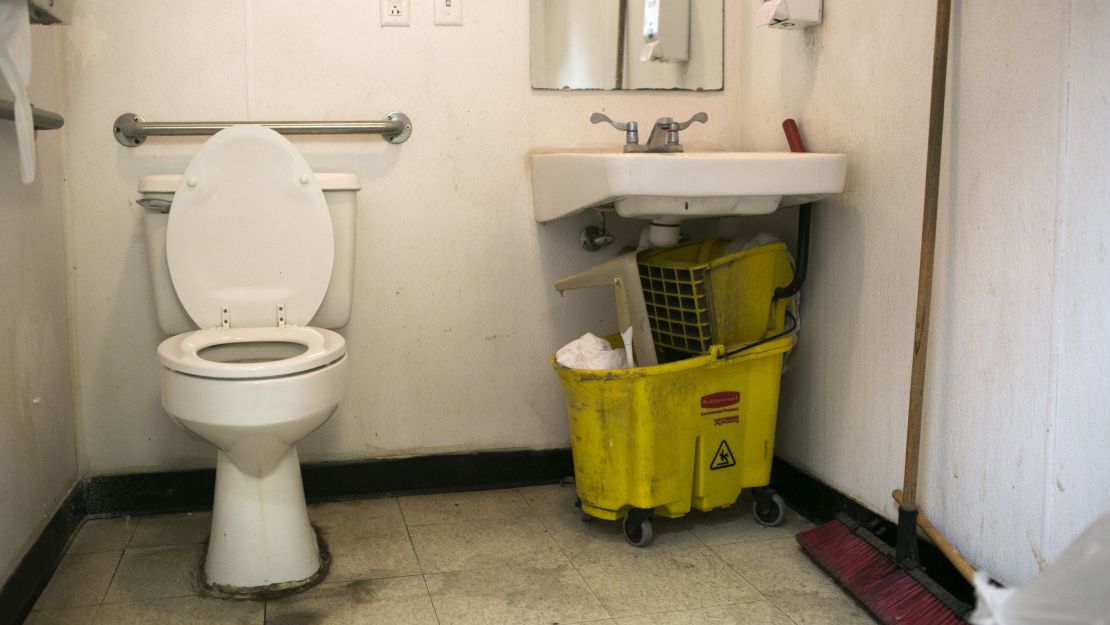
Almost two hours later, as darkness falls, Mayor Williams’ phone buzzes once again. He swipes his screen. It’s an update from Huntington Fire Chief Carl Eastham. The victim of the final overdose – a 19-year-old woman just outside the city limits – has made it alive to Cabell Huntington Hospital.
“There have been no OD deaths that we can find at either hospital,” Eastham texts a few minutes before 9 p.m.
“Thank heaven for that,” the mayor replies, before firing off another text: “Obviously carfentanil has arrived.”
“Appears that way,” Eastham writes.
How to get help
The overdose count stands at 26 – none are fatal. A handful of victims refused a ride to the city’s two hospitals. Everyone taken to the facilities, authorities say, declined offers of long-term treatment that day.
Lt. McClure ends his shift, exhausted but thankful no other major emergencies arose during the hectic five hours.
Judge Keller, after spending the evening worried about the victims, goes to bed grateful the men and women enrolled in her drug court program have been spared.
Rocky Johnson, head of the special investigations unit, tells his officers to mentally prepare for the next day and the likelihood of finding dead heroin users – people who shot up alone.
At Sara Murray’s neonatal unit and at Lily’s Place, 36 heroin babies live to see another day.
The nurse and her staff work late into the evening, feverishly making calls to find the mothers and fathers of the babies in their care. Murray is nearly 14 hours into her day when word comes that none of the parents has overdosed. A wave of relief washes over her.
It’s a minor victory, in a war where there are few.
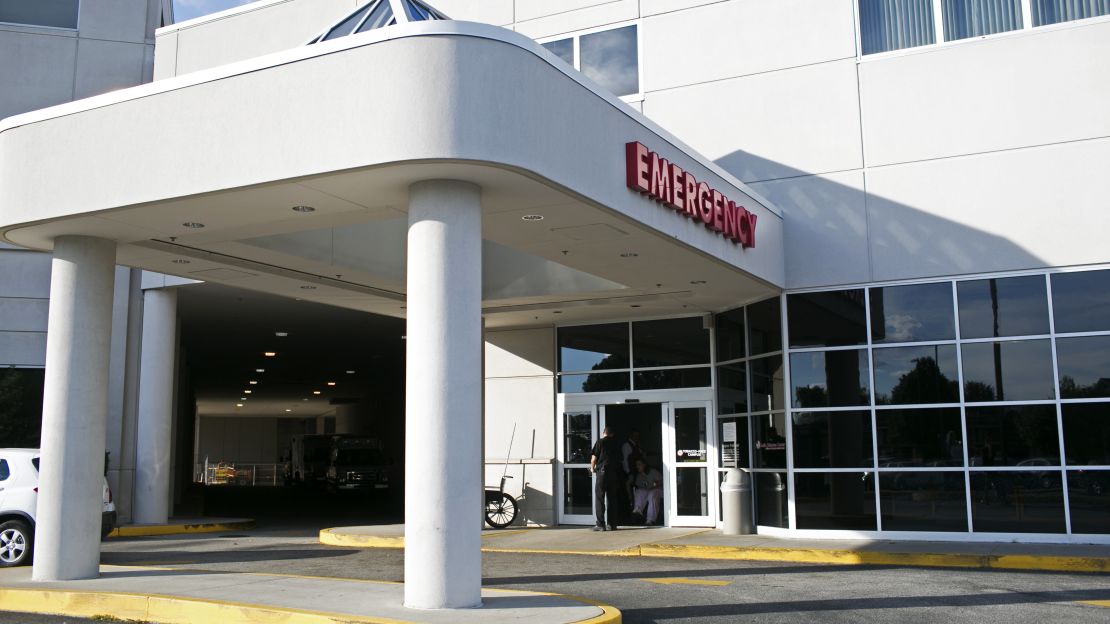
Epilogue
A day later, Chief Ciccarelli confirms a man who died of cardiac arrest at St. Mary’s hospital on August 15 had heroin in his system. The time of death makes him the first fatality, raising the overdose count to 27.
Lt. McClure narcans one of those overdose victims again three days later.
On August 20, Ilena Perry, a 76-year-old mother from Wayne County – the rural countryside where the Marshall University plane crashed in 1970 – lays her 54-year-old son to rest.
How this story was reported
Billy Joe Farmer was found on August 18 – three days after authorities say he died. He was seven months into a long-term recovery program.
He was the father of two.
Huntington’s final tally for that five-hour window: 28, with two fatalities.
After pulling surveillance footage of a man matching the description of the pied piper, police worked with multiple agencies to arrest Bruce Lamar Griggs, a 22-year-old man from Akron, Ohio. Griggs faces federal drug charges for his alleged role in distributing heroin in Huntington on August 15.
The drug continues to torment Huntington. Paramedics have plowed forward at a blistering pace of more than seven saves a day. In one case, a mother lost custody of her toddler after overdosing with the kid in the car.
























